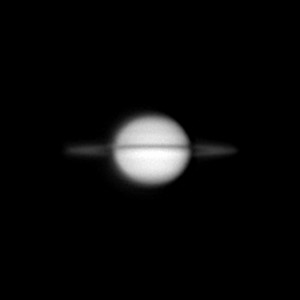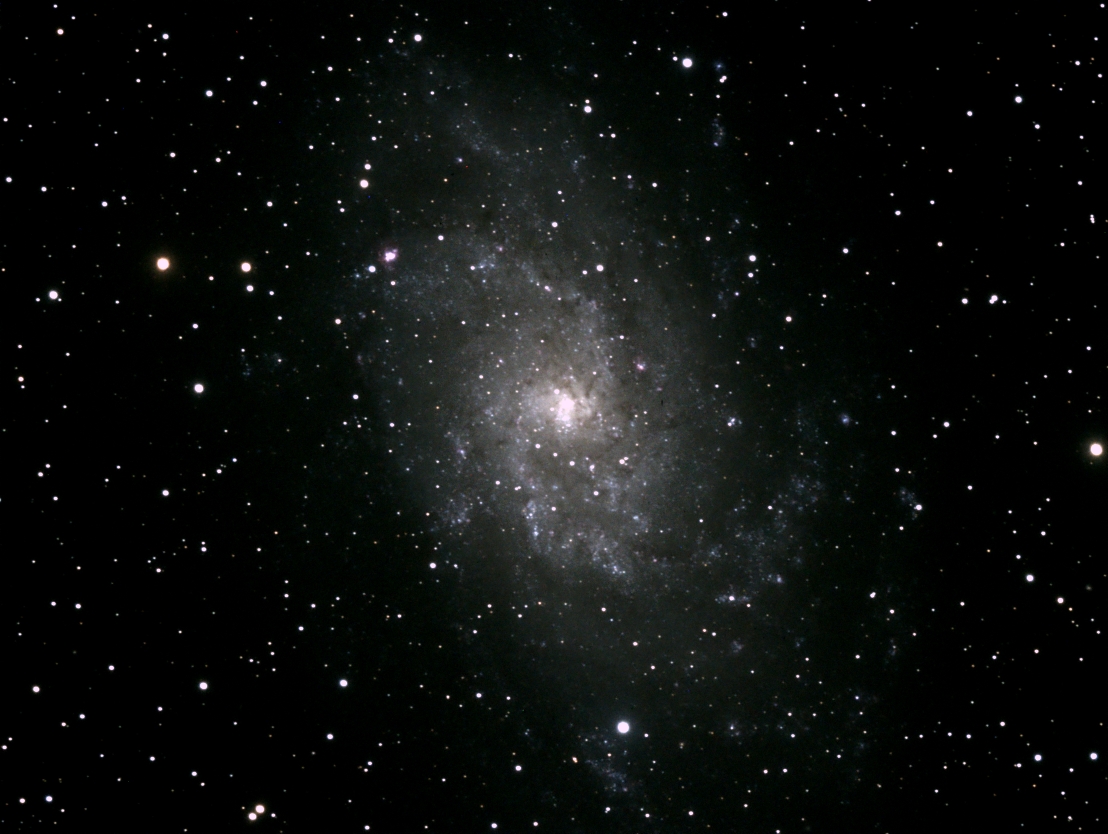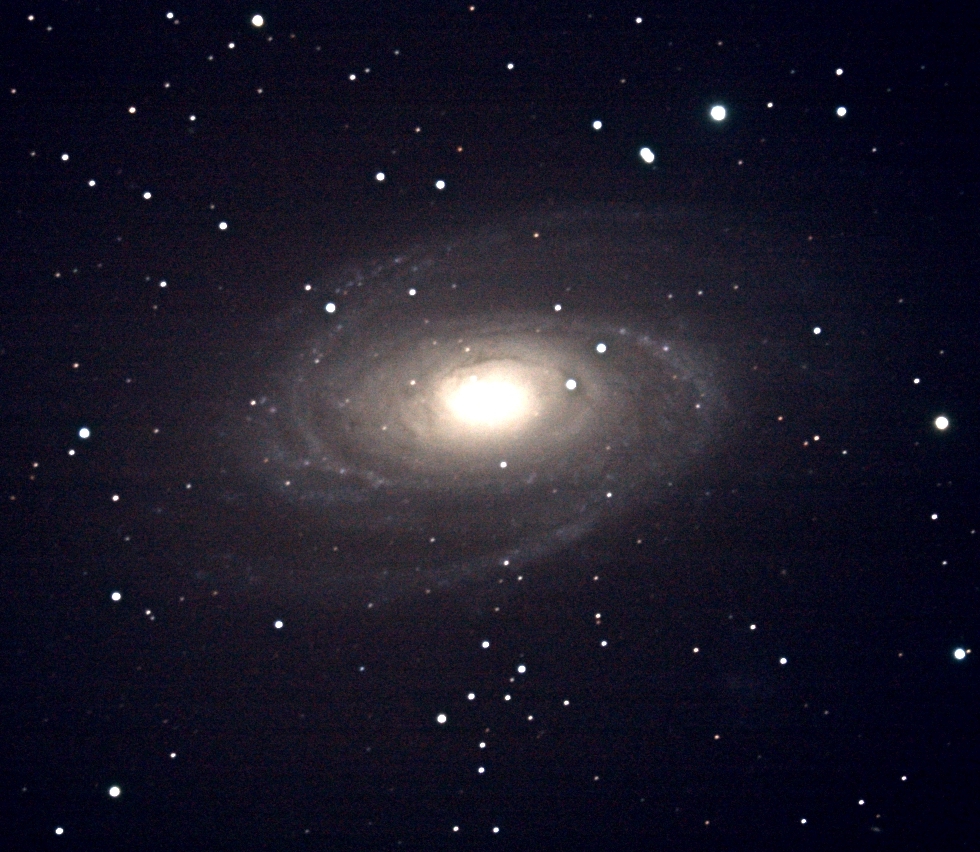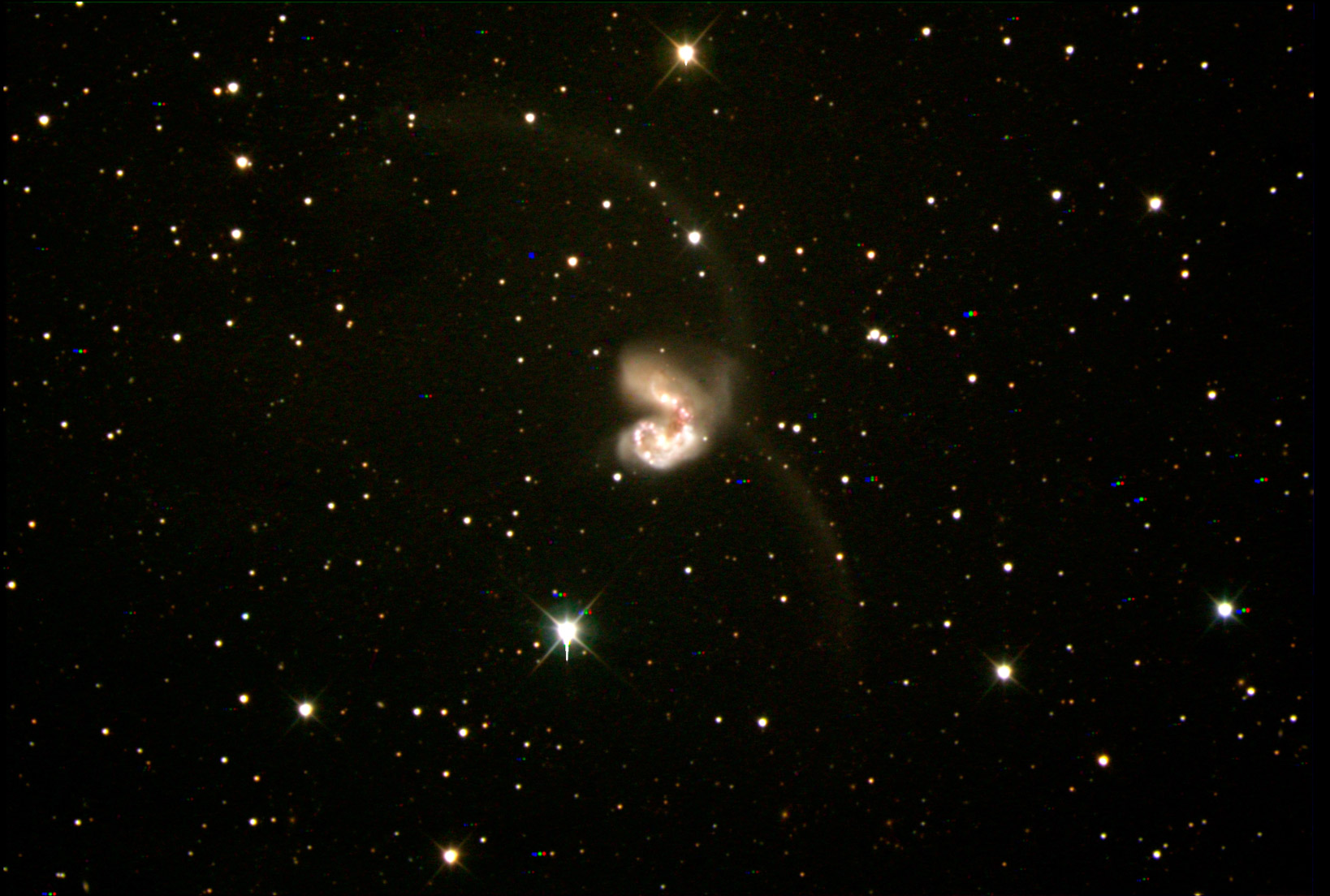Gyulbubaghian’s Nebula (pronounced gyool-boo-DAH-ghee-an) is a Herbig-Haro object (HH215) – a variable bipolar nebula generated by the shock waves from the variable star PV Cephei. As a reflection nebula it does not emit light of it’s own but is illuminated by the nearby star. It has also been observed to fluctuate rapidly in brightness.
A request from the Deep Sky section of the BAA alerted me to the possibility that this object was currently very faint and I decided to image it using the GRAS-1 telescope to confirm this.
The result is shown here, the nebula is marked by the intersection of the two lines. The image is in negative form as this makes the nebula easier to see. Five 180 second exposures with a photometric V filter reveals that it is very faint at the moment but large, rapid fluctuations in brightness have been reported before so I shall return to this in the near future.
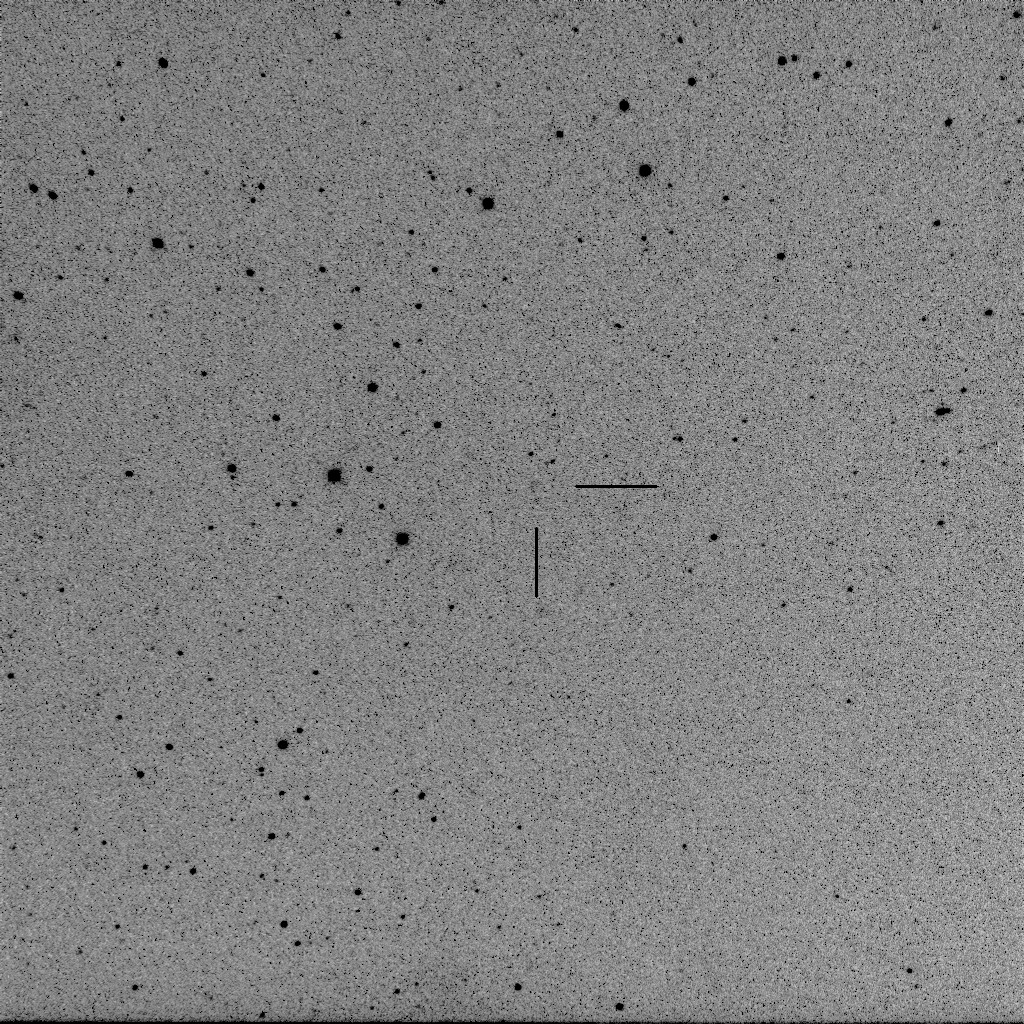
For my next attempt I will try and use more exposures to reduce the noise level in the picture. As usual, clicking on the image will show the full size version.

